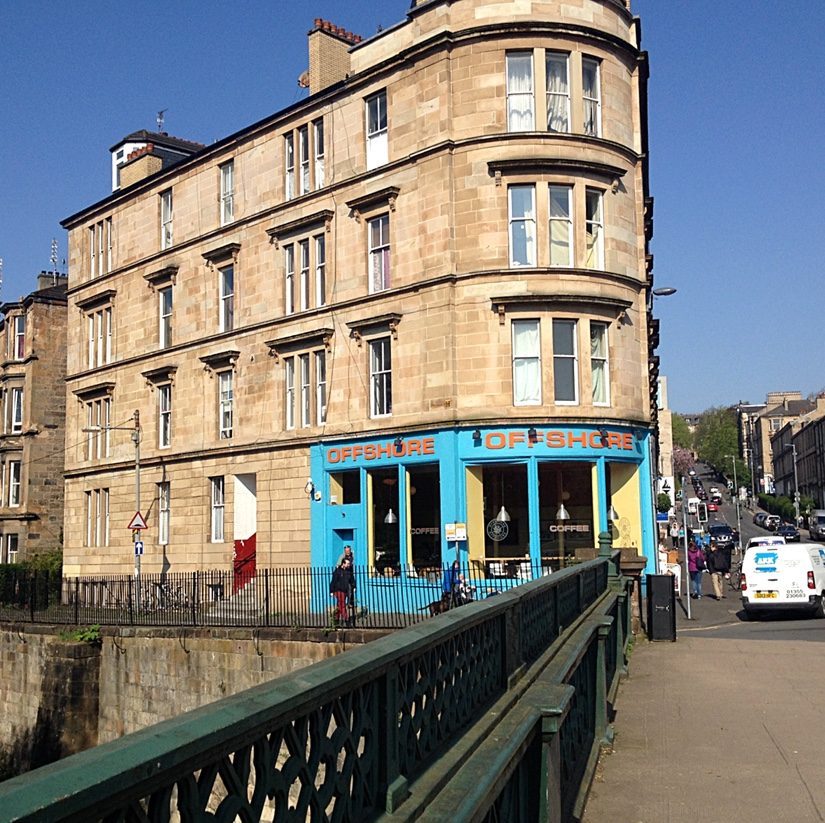Helen Rose’s Outdoor Diary: Glasgow Cathedral and Necropolis

October, 2025
Bearsden and Milngavie Ramblers arranged a visit to Glasgow Cathedral and Glasgow Necropolis.
Provand’s Lordship
We met outside the Cathedral across from Provand’s Lordship at Cathedral Square. . Provand’s Lordship was built as part of St Nicholas’s Hospital by Andrew Muirhead, Bishop of Glasgow in 1471, A western extension, designed by William Bryson, was completed in 1670. In the 19th century it was acquired by the Morton Family who used it as a sweet shop. Following a generous donation by Sir William Burrell, in the form of cash as well as a collection of seventeenth-century Scottish furniture in the late 1920s, the house was bought by the specially-formed Provand’s Lordship Society, whose aim was to protect it. In 1978, the building was acquired by the City of Glasgow District Council who restored it. It was reopened to the public in 1983, and, following further restoration work which lasted two years, re-opened again in 2000.
I have a family connection with the house as one of my ancestors was reputedly the last tenant there. My Granny had been told an American man came in to the house and broke a corner from the hearthstone as a souvenir, Great story, eh?!
Glasgow Cathedral
Cathedral Square is at the top end of High Street in the oldest part of Glasgow adjacent to the Royal Infirmary which also has a rich history and was built in 1791.
Glasgow Cathedral’s history began with a 6th-century chapel founded by St Mungo (St Kentigern) near his tomb, which grew into a city. The current Gothic structure, built mainly from the 13th to 15th centuries, is the only medieval Scottish mainland cathedral to survive the 1560 Reformation largely intact. It served as a spiritual and secular centre, with the city developing around it. Today, as a significant historical landmark. It is the most visited tourist attraction in Glasgow. Our wonderful volunteer guide Richard from the Friends of Glasgow Cathedral gave us a tour of one and a half hours pointing out the main historical points of the Cathedral. The building is owned by Historic Scotland but does operate also as a Chuch of Scotland for a local community.
It has the features of a Gothic Cathedral but the rose window was lost at the reformation with the ruins of the churches. The interior features eight sided pillars and would all have been built of blonde sandstone making it light and airy.
University of Glasgow Foundation
The University of Glasgow holds an Annual University Service at Glasgow Cathedral on a date in March, commemorating its foundation by Bishop William Turnbull in 1451 and celebrating its historical connection to the Cathedral. This long-standing relationship is a significant part of the university’s ceremonial traditions, which also include a procession to the Glasgow Necropolis.The University is now located in the westend of Glasgow at Gilmorehill. The University was founded in the St Nicholas Chapel in the Crypt.
Cathedral Organ
Glasgow Cathedral’s organ, originally built by Henry Willis in 1879, has a significant portion of its extensive pipework hidden within the north and south triforiums (galleries above the side aisles) of the choir. We were advised it was now fully computerised!
St Mungo’s Tomb
St. Mungo’s tomb is located in the crypt of the Glasgow Cathedral, a pilgrimage site and the spiritual centre of the cathedral. The site marks the location of the first church built by the 6th-century missionary, St. Mungo (also known as St Kentigern) before his death in 614 AD.
Stained Glass
Much of the stained glass was lost and some new modern glass has been installed recently. One is the Tree of Jesse and shows the movement of trees by a contemporary stained glass maker.
There is also an older window depicting the Merchants of Glasgow through the Trades House
Glasgow Necropolis
The Glasgow Necropolis was formed in 1832 adjacent to the Medieval Cathedral on a rocky hill. The land was purchased by the Merchants House in Glasgow and the layout was inspired by the Pere Lachaise Cemetry in Paris
The cemetery is non denominational.
We had an afternoon tour of two hours by a volunteer guide Annette from Friends of the Glasgow Necropolis. The Necropolis is an ongoing historical research and preservation project and donations are welcome. The Necropolis is located adjacent to the Cathedral but there is so much to see I can only cover a few tombs of interest. The weather was dull so the photos don’t show it well. The upper part on the hill is known as Millionaires Row where the largest Memorials are to be found.
We entered through the main gates which are the oldest wrought iron gates in Glasgow. Descendants of the Edington Phoenix Foundry owners funded the renovation and the gates look very smart.
It is then over the Bridge of Sighs above a road to the cemetery where the Molendinar Burn is now culverted.
The statue of John Knox dominates the skyline. There is so much of interest that I will just give you a brief tour of some tombs.
Theatre Royal
As a regular theatre goer, I was particularly interested in John Henry Alexander, who was the actor/proprietor/manager of the original Theatre Royal in Dunlop Street which burned down and the present Theatre Royal is now in Hope Street. His monument from1851 is elaborate with a stage, complete with footlights and the figures of tragedy and comedy and the man himself wearing a laurel wreath featured above the stage.
Buchanan Sisters
The philanthropic sisters of Buchanan of Bellfield did many good deeds including the funding of a lunch club in Kilmarnock which runs to this day. There was also a legacy to the Merchants House of Glasgow to maintain the gates of their mausoleum. The gates of the mausoleum were in disrepair so the Friends of the Necropolis had approached the present Merchants House who did the restoration!
Asian Merchant
As the Necropolis is a non denominational Cemetery there was a mausoleum to an Asian Merchant where the gates had Moorish design wrought iron work. The Friends of the Neccropolis have worked tirelessly to have work done to bring the cemetery up to standard but there is a long way to go yet.
Stillborn Babies Memorial
A Jewish jeweller funded a tombstone memorial to stillborn babies.
There is no single “most famous” person buried in the Glasgow Necropolis, but among its notable residents are Hugh Tennent, founder of the famous Tennent’s Brewery and William Miller, the poet behind the nursery rhyme “Wee Willie Winkie”. The Necropolis is a resting place for many influential figures in Glasgow’s history, including notable industrialists, politicians, artists and philanthropists.
Thanks to Pauline and Lesley at the Ramblers for organising the tours and to enthusiastic and knowledgeable volunteer guides from Friends of G;asgow Cathedral and The Friends of Glasgow Necropolis. Please book a tour and donate generously to them.
Coming attraction. Ayrshire Coastal Path Completed
This section: Helen Rose Hillwalking Diary
Filed under: Helen Rose Hillwalking Diary
Related Pages
- Helen Rose’s Outdoor Diary: Roman Barr Hill and Croy Hill.
- Ayrshire Coastal Path. Final Sections. November 2025
- Helen Rose’s Outdoor Diary: Glasgow Cathedral and Necropolis
- Helen Rose’s Outdoor Diary: Royal Edinburgh Military Tattoo
- Helen Rose’s Outdoor Diary, Alnmouth, Northumberland
- Helen Rose’s Outdoor Diary: Braemar
- Helen Rose Outdoor Diary: Robert Burns Country
- Helen Rose’s Outdoor Diary: Cademuir, Peebles.
- Aviemore – Helen Rose Outdoors
- Helen Rose’s Outdoor Diary: El Rompido Part 2.
- Helen Rose’s Outdoor Diary, El Rompido Part 1.
- Helen Rose Outdoors – Grantown on Spey.
- Helen Rose’s Outdoor Diary: Edinburgh.
- Helen Rose’s Outdoor Diary – St Andrews from Kingsbarns
- Helen Rose’s Outdoor Diary: Kippford.
- Lismore. September 2024
- Helen Rose’s Outdoor Diary: 20th Visit to New York
- Helen Rose’s Outdoor Diary: Arran Revisited
- Oban Islands. June 2024
- Helen Rose’s Outdoor Diary: Donegal, St Patrick’s Day


















